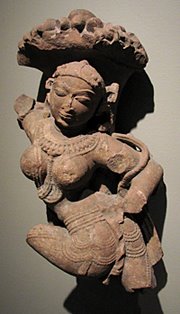For the first time in the 23 years, Elly and I decided to spend Thanksgiving together at home instead of attending or hosting a big family event. We have hosted many Thanksgiving and Christmas get-togethers for my brothers and sister living in Kansas City and their children since we moved into our midtown home in 1988. And when we haven't hosted the event, we have traveled to Colorado to spend Thanksgiving with Elly's parents.
With only ourselves to plan for, the day was relaxed, fun, and stress-free. Well, mostly stress-free. Elly has a fondness for trying new recipes at Thanksgiving, despite my encouragement to stick with the tried-and-true. All of the experimental dishes turned out well, however, giving only a few anxious moments.

One thing we never mess with is pumpkin pie. The secret to a great pie is to follow the recipe on the Libby’s can. (And use Pillsbury pie crusts!)
Given that we were cooking only for ourselves (and Samba), Elly limited the menu to ten dishes. These included an arugula salad with sliced pears, roasted grapes, and a roasted shallot dressing; a three-mushroom stuffing made with rosemary olive-oil bread; a sweet potato gratin on a base of carmelized onions; home-made cranberry sauce; white-cheddar mashed potatoes; turkey and cognac gravy (Elly, being a vegetarian, doesn’t partake of these two items, but Samba and I make up for that); deviled eggs (de rigueur for holiday events); brussel sprouts with an old-fashioned mustard butter sauce; some broccoli dish with pecorino romano cheese I can’t recall the details of at the moment; and, of course, pumpkin pie

Naturally, we had half a dozen issues of Fine Cooking and Gourmet magazine available for frequent reference while we were cooking, not to mention an extensive library of cookbooks. One nice change from previous years, since we were not concerned about dining in the early afternoon, was that Elly didn’t have to get up at three in the morning to start cooking.
We spent our day in the kitchen, which had been our plan, cooking, listening to Christmas music, and watching the many birds that visited our feeders. We saw most of the birds that regularly visit including dark-eyed juncos (the first to arrive), a beautiful pair of cardinals, blue jays (after peanuts), a young crow who has recently started visiting (our first), mourning doves (zillions), cow birds, starlings, a red-winged blackbird, downey woodpeckers, red-bellied woodpeckers, a light colored house finch, and a gold finch.
Another pleasant change from Thanksgiving pasts is that Samba was able to spend the day with us instead of locked in his kennel upstairs. (Samba is not fond of children.)

Here are the roasted grapes. The foil pouch holds one of the shallots for the dressing. Roasting grapes takes a surprisingly long time.


I tried making cranberry sauce for the first time last year, following a recipe from the November 2005 issue of Fine Cooking. It is simple to make and delicious — much better than the canned stuff. You combine 12 ounces of fresh cranberries, half a cup of fresh squeezed orange juice, a cup of sugar, and two teaspoons of finely chopped fresh rosemary. Bring this mixture to a boil, then simmer for ten minutes. Take it off the heat, mix in a half teaspoon of grated orange zest, and the dish is finished. (My kind of cooking.)
Here is Elly layering sweet potatos over the carmelized onions for the gratin.

Here are the mushrooms and various goodies for the dressing.

Elly is adding the mushroom mixture to the rosemary olive oil bread.

Samba volunteering his taste-testing services...

And here is the guest of honor, at least from my and Samba’s point of view. It’s an 11 pound organic Diestel turkey.

I brined the turkey for four hours in a concentrated salt-water mixture Wednesday evening and then let it air-dry in the refrigerator overnight. This is a Cooks Illustrated recommendation for a crisper crust. I’m not sure I’ll do that again. Brining makes a huge difference, though. I never roast a turkey without brining it first. I also followed the Cooks Illustrated suggestion to rotate the turkey during cooking: you need a wire rack to do that. Next time I will leave the bird breast down for at least an hour, then flip it breast up, and skip the steps of having one side and then the other up. I’m also not convinced the 400 degree oven is the best approach. I’m going to switch back to cooking longer in a 325 degree oven next time. Still, the turkey was excellent, tender and juicy. I cook to an internal breast temperature of 165 and a thigh temp of 170.
I’m deglazing the roasting pan here with a mixture of dry vermouth, cognac, and turkey broth.

This is the base for the cognac gravy. After this simmers long enough to absorb the turkey drippings and flavoring from the onions, carrots, and celery (roasted with the bird), it is strained and then combined with heavy cream and flour and brought to a simmer in a heavy sauce pot (nothing lo-cal here!).

And here is the reward for our day in the kitchen – a splendid Thanksgiving feast. Actually, spending the day together doing something we love was a reward in itself. We drank a bottle of Duckhorn merlot with our meal: a delicious wine given to us some time back by our neighbors Joan and Diane for watching their deadly feline, Gingersnap, while they were out of town.

After dinner we settled in to watch
White Christmas, a Thanksgiving tradition for us. We fell asleep about half way through the movie. Another tradition.






















































